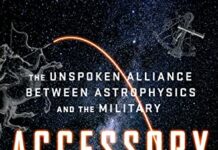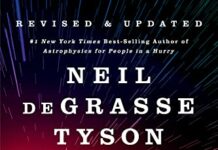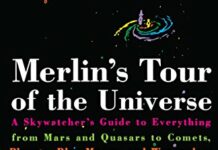
Ebook Info
- Published: 2016
- Number of pages: 463 pages
- Format: PDF
- File Size: 12.19 MB
- Authors: Neil deGrasse Tyson
Description
The New York Times bestselling tour of the cosmos from three of today’s leading astrophysicistsWelcome to the Universe is a personal guided tour of the cosmos by three of today’s leading astrophysicists. Inspired by the enormously popular introductory astronomy course that Neil deGrasse Tyson, Michael A. Strauss, and J. Richard Gott taught together at Princeton, this book covers it all—from planets, stars, and galaxies to black holes, wormholes, and time travel.Describing the latest discoveries in astrophysics, the informative and entertaining narrative propels you from our home solar system to the outermost frontiers of space. How do stars live and die? Why did Pluto lose its planetary status? What are the prospects of intelligent life elsewhere in the universe? How did the universe begin? Why is it expanding and why is its expansion accelerating? Is our universe alone or part of an infinite multiverse? Answering these and many other questions, the authors open your eyes to the wonders of the cosmos, sharing their knowledge of how the universe works.Breathtaking in scope and stunningly illustrated throughout, Welcome to the Universe is for those who hunger for insights into our evolving universe that only world-class astrophysicists can provide.
User’s Reviews
Reviews from Amazon users which were colected at the time this book was published on the website:
⭐I very much enjoyed this book, but with some caveats. The primary one is that there is quite a bit of math and much of it is advanced. What I think would be helpful is an easy way to read the book and skip the math – in the Kindle version this could be very easy – and I don’t think the reader will lose anything substantial by doing so. Another caveat is regarding the chapter on the future of humanity: much (perhaps all) of what is said in speculative but it is not presented that way. I enjoyed the material but I did find it a little irritating that the author expressed such great confidence in his predictions and assumptions. Caveats aside, this is a fun book to read and I was eager to come back to it again and again. Neil’s chapters are especially fun because of the humor, even if often corny. If a follow up book is published that updates this material I would want to read it.
⭐An exceptional review of the features of the universe. Examples are clearly and cleverly presented so you easily understand what the point of each topic is. Written with charm and humor. This is a pleasant book to read but it isn’t just a casual read, it is a high-level intellectual experience.
⭐This is a wonderfully written book for someone who is interested in astrophysics, but does not have the knowledge to understand more technical books that are written for physicists. Three authors have contributed to this book, all prominent astrophysicists. I just received my copy, with its beautiful dust jacket, and couldn’t wait to start reading it! The first section of the book is written by Neil DeGrasse Tyson, who offers us a humorous approach to the vast subject of the universe. I only started reading the book yesterday, so I can’t as yet review the other authors, but from what I can tell by gleaning over the pages, it is impressive!I had originally been considering buying the audiobook version, but after reading comments that it was very difficult to understand “mathematical equations read out loud”, I decided to go for the printed version instead. I am so glad I did! As you can tell by my photos of a few sections of the book, there are color illustrations and diagrams, math equations, etc, that simply could not be relayed by words. Even if some pdf files are included with the audiobook version, I doubt that you would receive the quantity and quality of the illustrations in the actual physical book. I bought a “Used, Very Good” copy from Amazon Prime, but I would label it “Used, Like New.” It’s a pristine copy, dust jacket in mint condition! At $10.49, it was a bargain, considering that the book originally sold for $39.95, as shown on the inside of the cover!This book will offer you hours of fascinating information about the universe!
⭐This was quite enjoyable and informative. I have read several books by Neil DeGrasse Tyson, but this one was by far my favorite. This book offers a more in-depth discussion of astronomy, astrophysics, and cosmology, and it compliments his other books very nicely. Each of this book’s authors have their own distinct method of presenting information, and I found it quite refreshing to receive different narratives of the material. Additionally, I am thrilled that this book offers the equations that explain the material in question. I would advise that you read a more basic, introductory book to find if you are interested in these topics, as the explanations in this book introduce a more comprehensive approach. If you love astronomy, astrophysics, and cosmology, (and you don’t mind some mathematics), this book is 100% worth the read!
⭐I really enjoyed this tour of the universe with a little bit of math thrown in (I have a PhD in math so still love proofs of scientific statements). I just have one little quibble (or maybe not so little). In Dr. Tyson’s description of the Drake equation he uses the one example of life in the universe that we know of – the Earth – to estimate the percentage of planets in habitable zones – f sub L – that develop life. And I agree that it is probably very high (based on books such as A New History of Life by Peter Ward and Joe Kirschvink and The Vital Question by Nick Lane). However, Dr. Tyson used a different argument – the evolutionary advantage of intelligence – to come up with an estimate of < 0.1 for the estimate of those planets with life to develop intelligence. I would argue that those same books I quoted above pointed out an alternative argument. Again using the one example of a planet with life, those books point out that even though life developed relatively quickly on Earth, it was single celled life. Multi-celled life took another 2 billion years and only happened once (since all life can be traced to that one event). Hence could make a couple of conclusions here. One is that you obviously need multi-celled life to develop intelligence. And, second one could say that there is one chance in 4 billion of a planet with primitive life developing an intelligent species.Thus, instead of about 190 planets with intelligent life in our galaxy, I would argue that this number should be 190 x 2.5E-10 or .000000475. This means that 4 out of every 10 million galaxies would have an intelligent civilization. And, based on a recent estimate of a trillion galaxies in our observable universe, there would be only 4750 civilizations.I would love to get Dr. Tyson's view of this much more pessimistic estimate of the value of f sub I - the Drake equation's estimate of the number of planets with life that develop intelligent life.I should also point out my estimate above ignored other factors, i.e., multi-celled life wouldn't necessarily result in an intelligent species. However, I agree with Dr. Tyson's feeling that intelligence is an advantage in evolution and so that might almost be a 100% probability. -- Horace Heck ⭐I love Neil deGrasse Tyson’s books! ALL OF THEM!!! ⭐A fascinating introduction to Astrophysics. The authors are academics who have translated their first year University course into plain English (or at least plain American), providing both a historical overview of key discoveries and developments with up to date explanations of our current understanding of the Universe, and discussion of the gaps in our knowledge. Some basic maths/physics are needed (I have A level Physics and still struggled in a few places - for example "we need to integrate the Planck function"!) but generally the principles behind the maths is fully explained and you don't have to delve too deeply into the equations unless you want to. On the other hand the way some basic physical principles can be derived purely from maths is a revelation - for example just two equations show that gravitational force does not depend on mass, a principle since proved empirically. A great read for anyone interested in current science. ⭐It's a really excellent explanation of what's going on in the universe and explains a lot you may have wondered about. But be under no illusions - you do have to have a good school level grasp of at least maths and physics to get the most out of this. That being said, the authors are excellent at engaging and illustrating their points to enhance understanding and have a very easy way of cimmunication. Am I a fan of this book? Definitely! I just wish I'd learnt a bit more in class. But you WILL learn from this book. ⭐This book arrived today, i was expecting promise and having a browse i am not dissapointed. If you are a relative laymen to this great field of science who wants to read just a BUT wants a little more than a standard popular book provides, this is it. Cannot wait for a quiet moment now to really digest this. ⭐What a book,explains in pots and pans terminology the extremities of space and our galaxy and beyond..a brilliant read for the average punter that knows next to nothing about the universe. ⭐One of the best books to cover basic and advanced topics in Astronomy I have come across. This is a worthy addition for anyones bookshelf/reference source. Highly recommended
Keywords
Free Download Welcome to the Universe: An Astrophysical Tour in PDF format
Welcome to the Universe: An Astrophysical Tour PDF Free Download
Download Welcome to the Universe: An Astrophysical Tour 2016 PDF Free
Welcome to the Universe: An Astrophysical Tour 2016 PDF Free Download
Download Welcome to the Universe: An Astrophysical Tour PDF
Free Download Ebook Welcome to the Universe: An Astrophysical Tour


